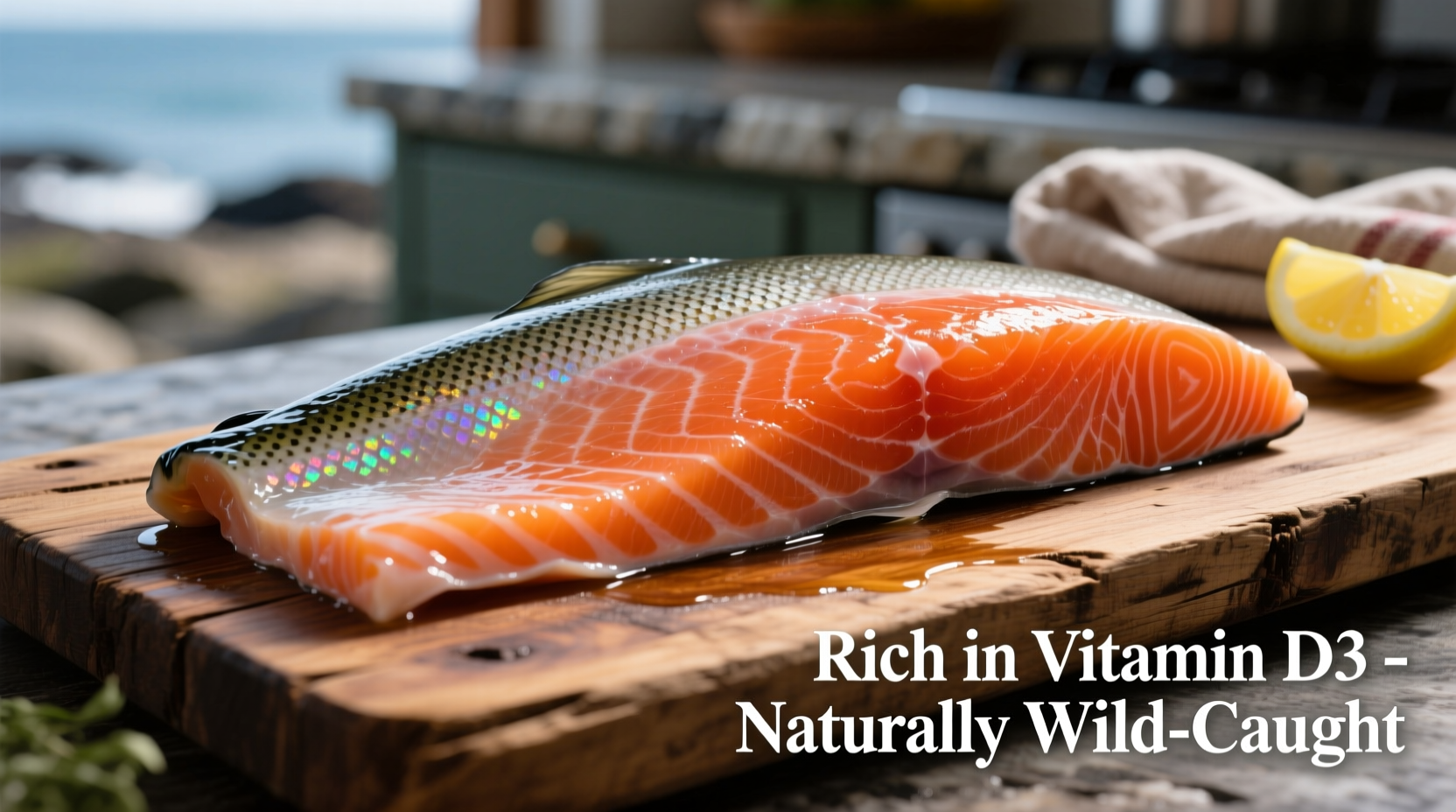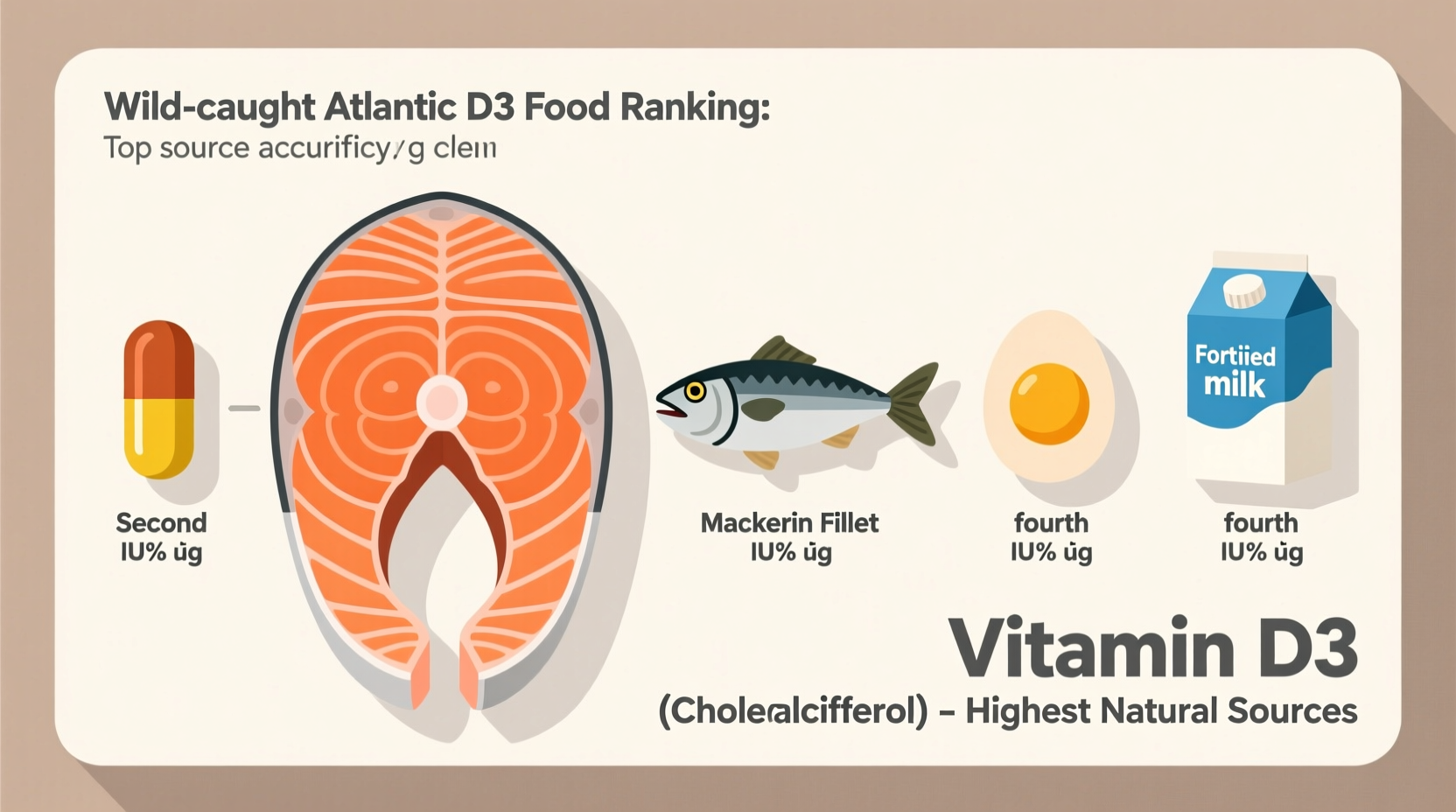
When searching for the most potent natural sources of vitamin D3, you need immediate, actionable answers. This guide cuts through the confusion with verified nutritional data from authoritative sources like the USDA FoodData Central database. You'll discover not just the top food sources, but how to realistically incorporate them into your diet while understanding key variables affecting vitamin D3 content.
Why Vitamin D3 Matters Beyond Basic Nutrition
Vitamin D3 (cholecalciferol) outperforms plant-based D2 in raising blood levels by 87% according to NIH research. This fat-soluble vitamin regulates calcium absorption, supports immune function, and reduces inflammation. Deficiency affects 1 billion people globally, making dietary awareness crucial. Unlike vitamin D2 from mushrooms, D3 comes exclusively from animal sources and sunlight exposure.
Cod Liver Oil: The Concentrated Powerhouse (With Caveats)
Cod liver oil dominates vitamin D3 rankings with 1,360 IU per tablespoon—more than double the daily requirement for adults. However, this traditional Nordic remedy functions more as a supplement than food due to its intense concentration. Important context: A single serving also delivers 9,000 IU of vitamin A, exceeding safe limits if consumed daily. The FDA recommends treating cod liver oil as a supplement under professional guidance rather than a culinary ingredient.
Top Whole Food Sources: Verified Rankings
| Food Source | Serving Size | Vitamin D3 (IU) | Key Variables |
|---|---|---|---|
| Wild-caught salmon | 3 oz (85g) | 570-1,000 | Wild > farmed (4x higher); summer catch > winter |
| Atlantic mackerel | 3.5 oz (100g) | 360-600 | Smaller fish = higher concentration |
| Canned sardines | 3.5 oz (100g) | 270 | In oil > in water; bones included |
| Pasture-raised egg yolk | 1 large | 40 | Hens with sun exposure = 3-4x more D3 |
| Fortified milk | 1 cup (240ml) | 100 | Added D3 only; natural content negligible |
Data sourced from USDA FoodData Central (2023 release). Note: Farmed salmon contains only 150-250 IU due to unnatural feed, demonstrating how production methods dramatically impact nutrient density.
Wild vs. Farmed: The Critical Vitamin D3 Difference
Understanding context boundaries is essential for accurate dietary planning. Wild salmon's superior vitamin D3 content stems from their natural diet of vitamin-rich plankton and krill. Farmed salmon receive synthetic supplements, resulting in significantly lower D3 levels. Seasonal variations also matter—summer-caught fish contain up to 50% more vitamin D3 than winter catches. Cooking methods affect retention too: baking preserves 90% of D3 versus 50% loss in deep-frying.
Practical Daily Integration Strategies
Meeting the NIH's recommended 600-800 IU daily intake requires strategic planning. A 3-ounce serving of wild salmon covers 100% of your needs, while two pasture-raised eggs provide just 10%. For consistent intake:
- Rotate fatty fish: Consume 3-4 oz wild salmon twice weekly
- Choose fortified options: Opt for D3-fortified dairy or plant milks
- Maximize egg benefits: Select eggs labeled "pasture-raised" or "omega-3 enriched"
- Combine with healthy fats: Vitamin D3 absorption increases 32% with avocado or olive oil
Vegans should note that mushrooms exposed to UV light provide vitamin D2, but conversion to active D3 in humans is inefficient. Consult a nutritionist about algae-based D3 supplements for reliable plant-derived intake.
Frequently Asked Questions
Is cod liver oil considered a food?
Cod liver oil functions primarily as a supplement due to its extreme nutrient concentration. While historically consumed as food in Nordic cultures, modern health authorities like the FDA recommend it only in measured supplement doses because excessive intake can cause vitamin A toxicity.
How much salmon should I eat weekly for vitamin D?
Two 3-ounce servings of wild-caught salmon per week provide sufficient vitamin D3 for most adults. This aligns with FDA seafood guidelines while avoiding mercury concerns. Farmed salmon requires nearly four servings to achieve equivalent D3 intake.
Can I get enough vitamin D3 from eggs alone?
No—even pasture-raised eggs contain only 40 IU per yolk. You'd need 15-20 eggs daily to meet requirements, which introduces excessive cholesterol. Eggs contribute to your intake but shouldn't be your primary source.
Does cooking destroy vitamin D3 in fish?
Minimal loss occurs with gentle cooking methods. Baking retains 90% of vitamin D3, while frying causes 50% degradation. Never boil fatty fish—water-soluble nutrients leach out. For maximum retention, bake at 350°F (175°C) for 12-15 minutes.
Are there plant-based vitamin D3 sources?
Naturally occurring D3 is exclusively animal-derived. Some lichens and algae produce D3, forming the basis for vegan supplements. Mushrooms provide D2 when UV-exposed, but human conversion to active D3 is inefficient (<5%). Reliable plant-based D3 requires supplementation.
By Lisa Chang











 浙公网安备
33010002000092号
浙公网安备
33010002000092号 浙B2-20120091-4
浙B2-20120091-4